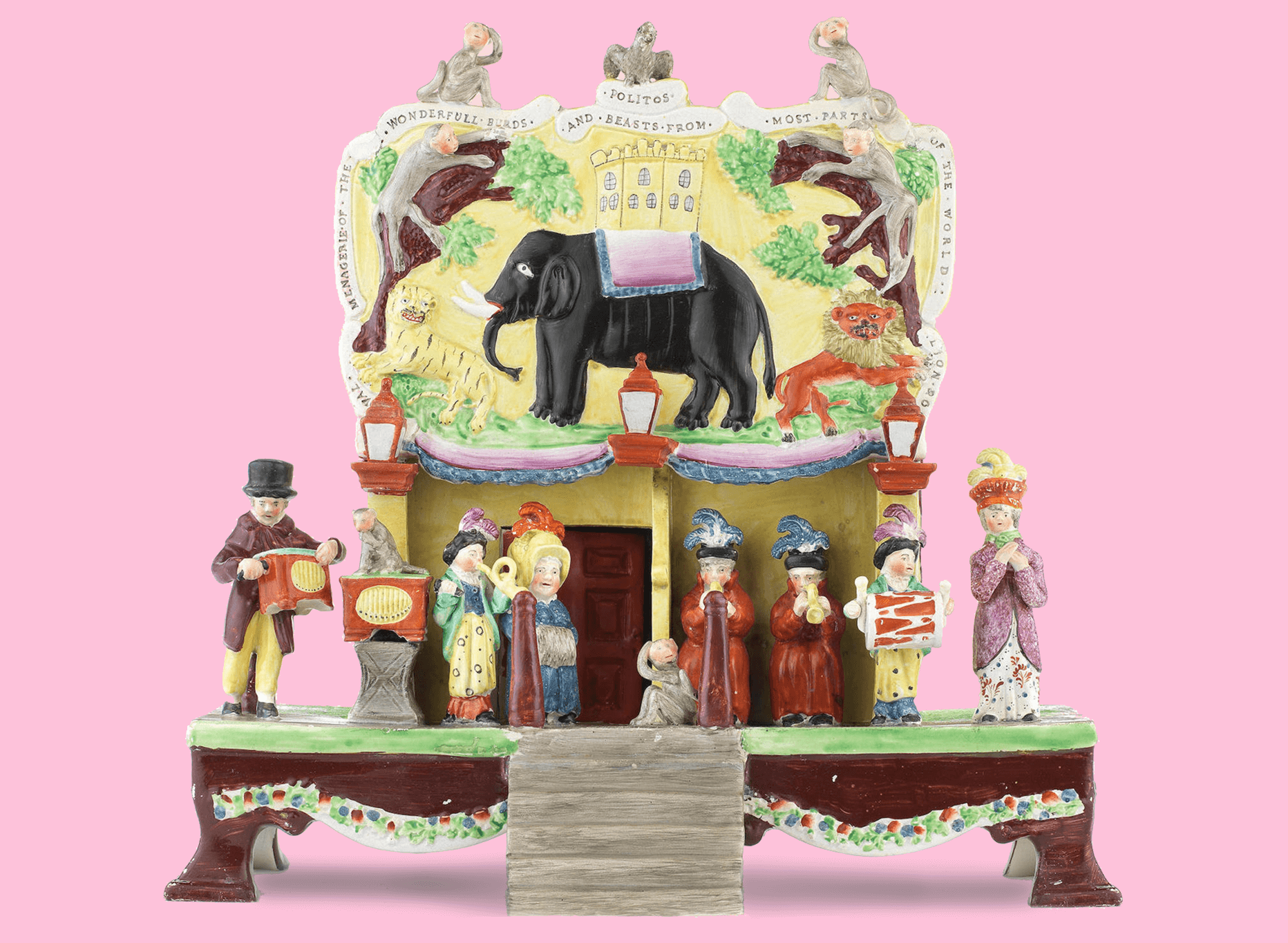Ibrahim Pasha
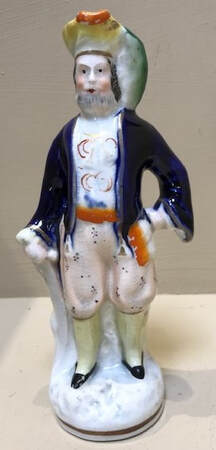
Ibrahim Pasha (1789 – 1848) was the eldest son of Mohammed Ali the Viceroy of Egypt and Sudan. He served as a general in the Egyptian army that his father established during his reign, taking his first command of Egyptian forces when he was merely a teenager. In the final year of his life, he succeeded his still-living father as ruler of Egypt and Sudan, due to the latter’s ill health.
His rule also extended over the other dominions that his father had brought under Egyptian rule, including Syria and Crete. He was Governor of Syria and visited London in 1846 where he was received by Queen Victoria.
Ibrahim predeceased his father, dying 10 November 1848, only four months after acceding to the throne. Upon his father’s death the following year, the Egyptian throne passed to Ibrahim’s nephew (son of Muhammad Ali’s second oldest son), Abbas.
Ibrahim remains one of the most celebrated members of the Mohammed Ali dynasty particularly for his impressive military victories, including several crushing defeats of the Ottoman Empire. Today, a statue of Ibrahim occupies a prominent position in Egypt’s capital, Cairo.

More Figures of the month
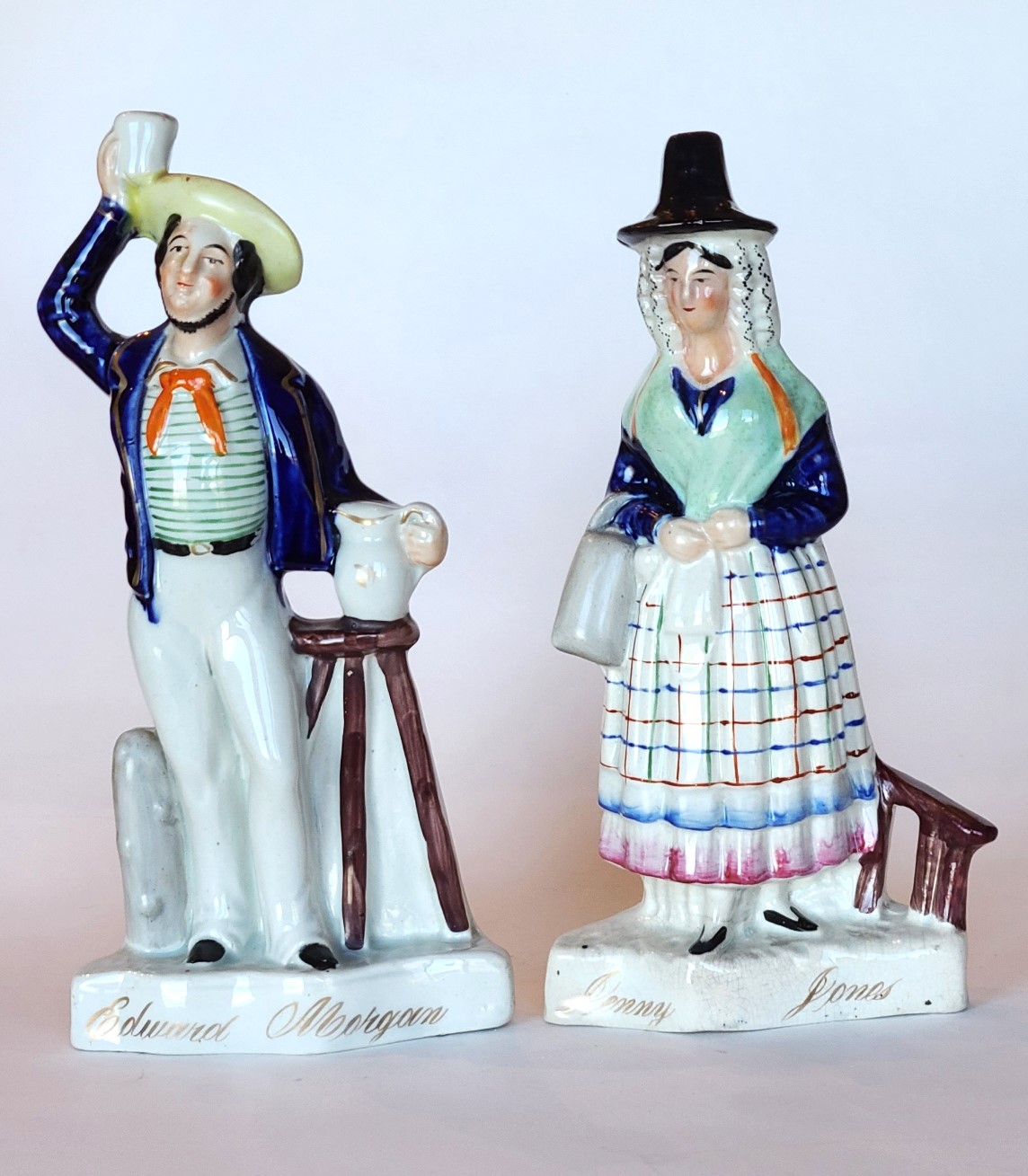
Edward Morgan and Jenny Jones
This is a rare pair of figures portraying Edward Morgan and Jenny Jones, titled with gilt script. The romantic tale of Morgan and Jones was set to music in 1825 by Charles James Mathews.
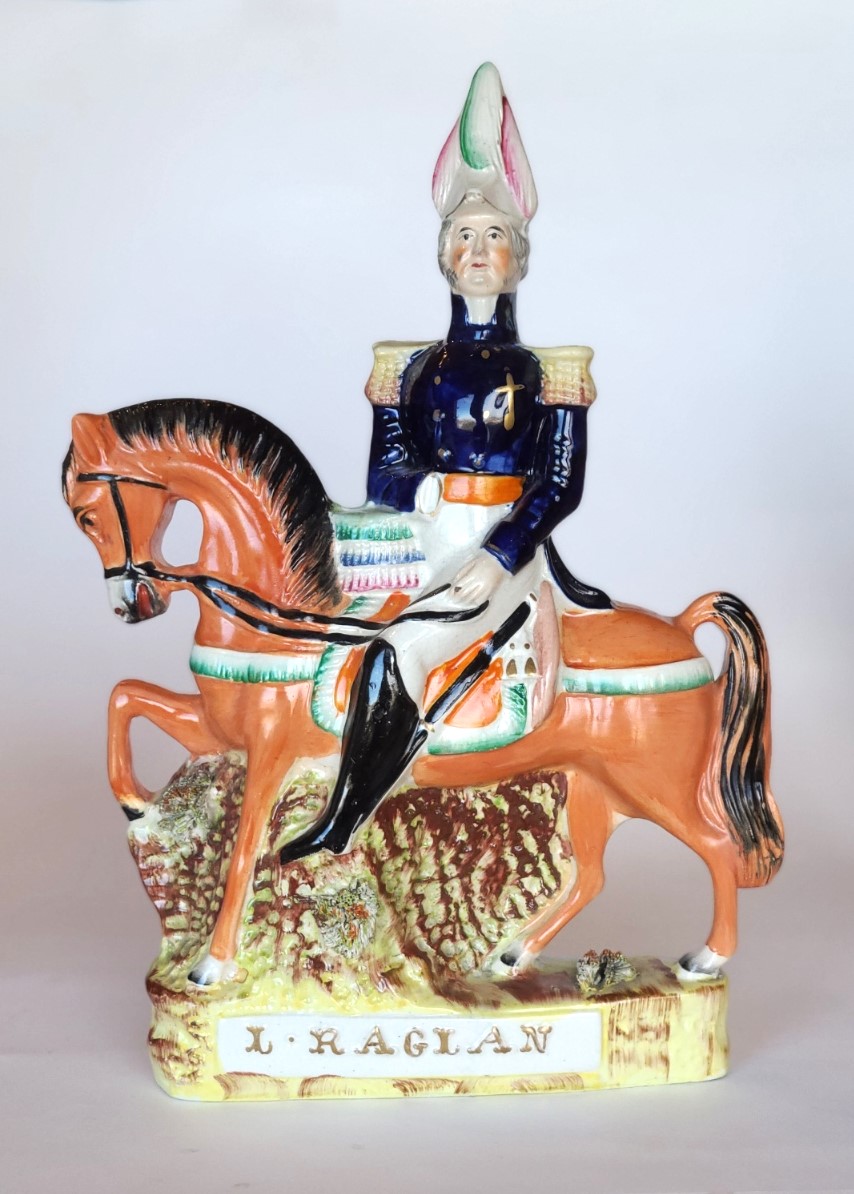
Field Marshal Fitzroy Raglan
This is a rare figure of Field Marshal Fitzroy Raglan. The figure stands about 12 1/4” tall and dates to about 1854.
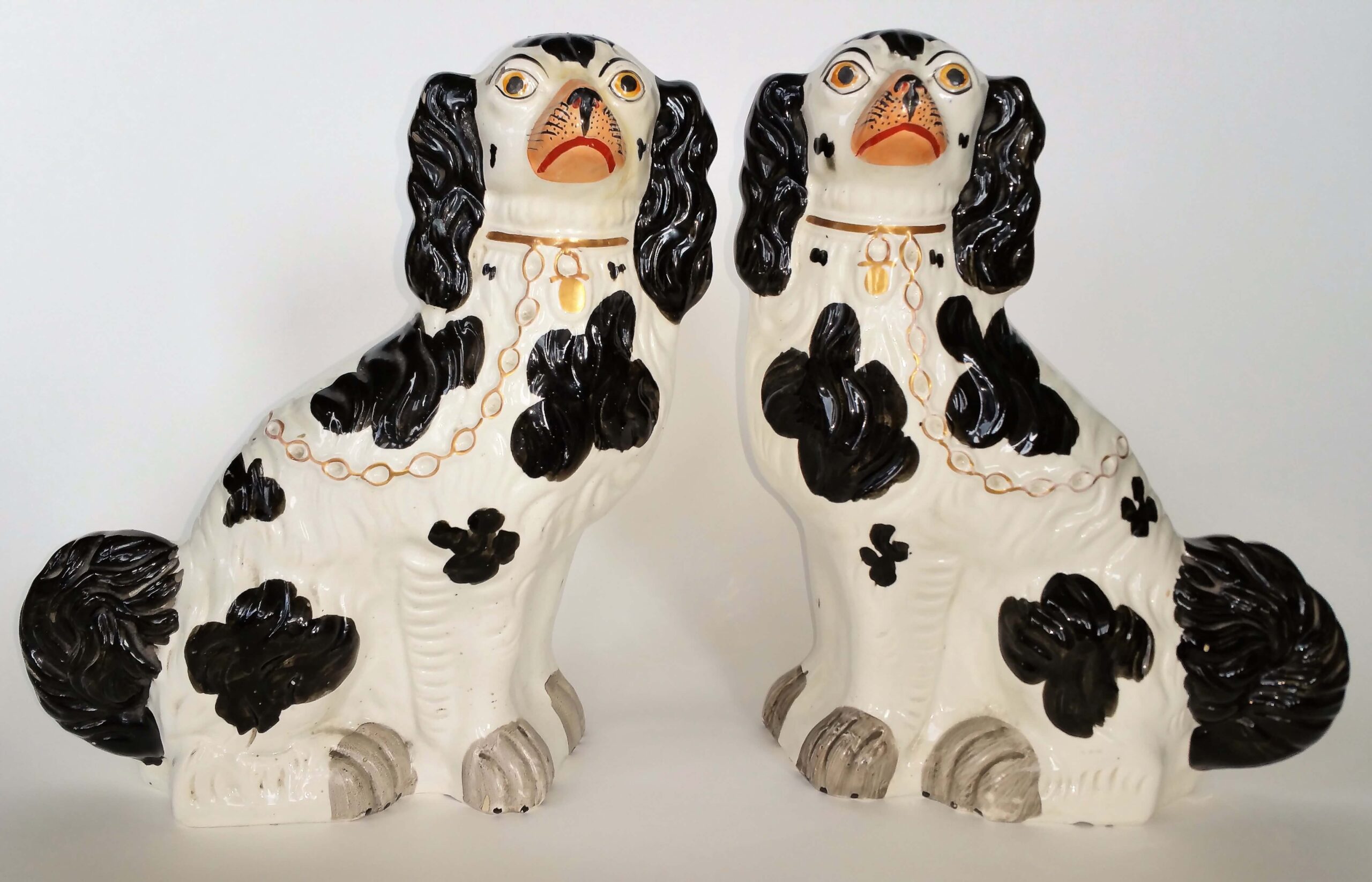
Black and white spaniels
This is fine pair of #1 black and white Staffordshire spaniels. They have a raised number one on the underside, designating them as the largest in a series of six sizes, number six being the smallest.
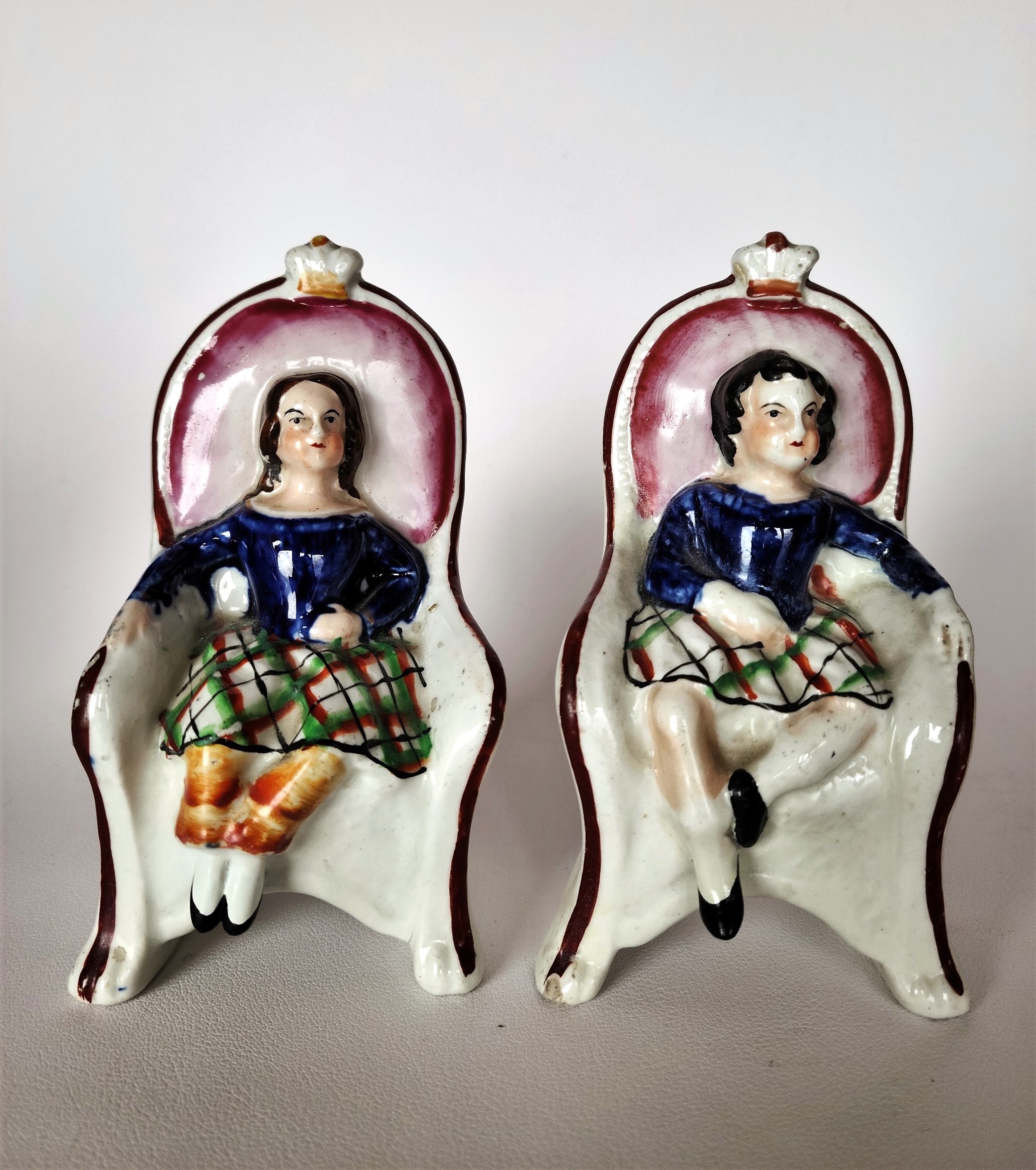
Royal children seated
This is a very rare pair of Staffordshire figures representing the Princess Royal and the Prince of Wales, seated in chairs. Each figure is approximately 5” tall and dates to about 1845.
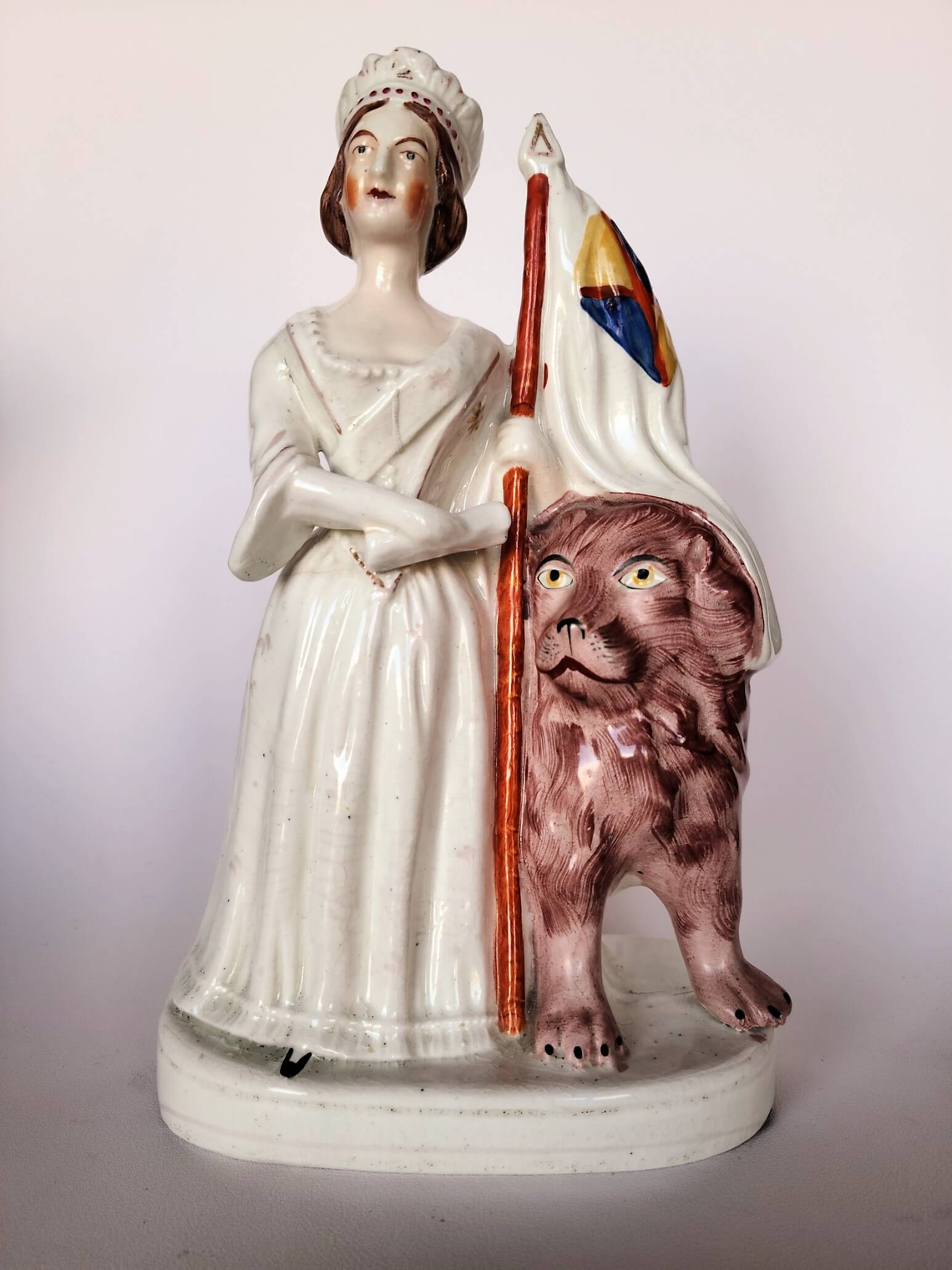
Queen Victoria
This is a rare Staffordshire figure of Queen Victoria, standing 8 3/4” tall and dating to approximately 1855. The Queen stands holding the staff of a flag in her left hand and a scroll in her right hand.
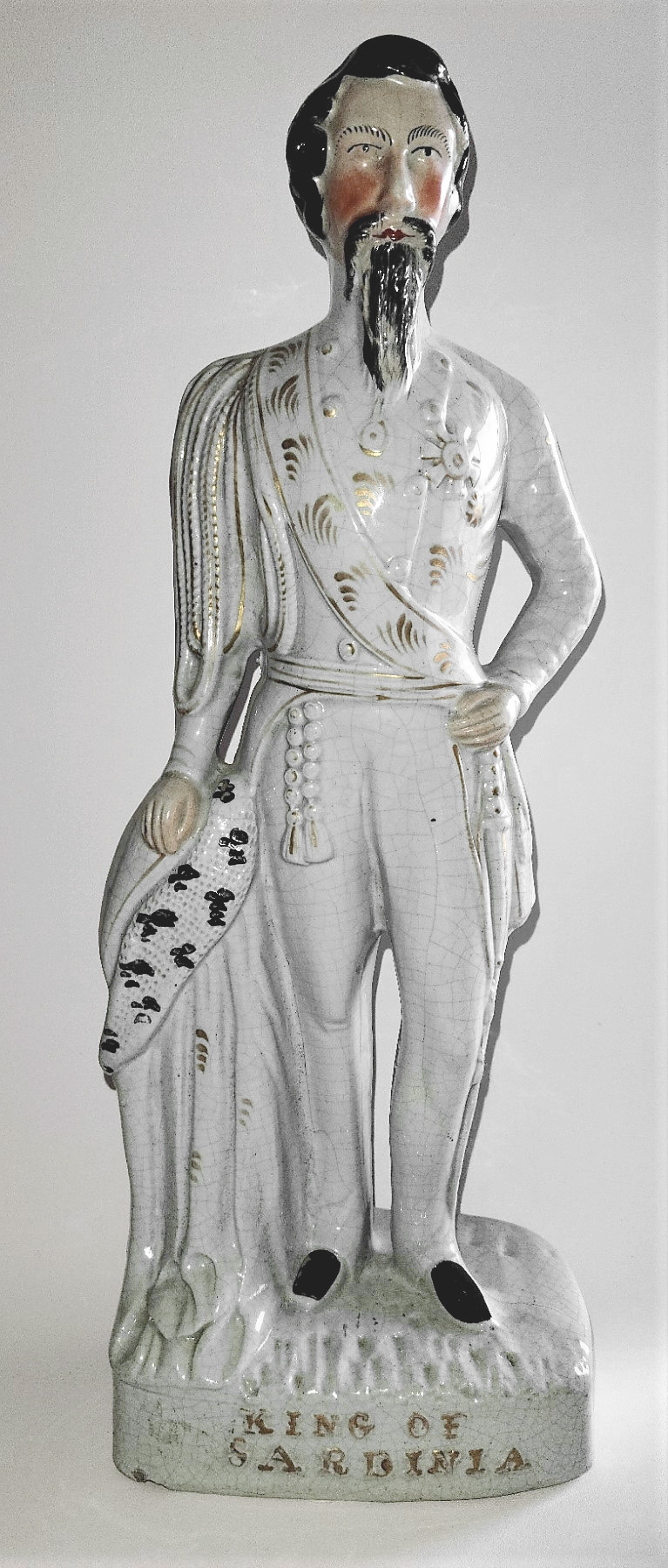
Victor Emmanuel II
This is a rare Staffordshire military figure of Victor Emmanuel II, standing 17” tall, dating to approximately 1855. It is titled in gold, raised capital letters, “KING OF SARDINIA”.
Membership
We warmly welcome new members – join us for free!
Wherever you are in the world, whether you are an experienced collector, a researcher interested in the folk art of England, or just someone who is intrigued by Staffordshire figures, please join us and get the rest of this year for free! Stay with us next year and pay an annual fee of £45 / $50 per household in January.
